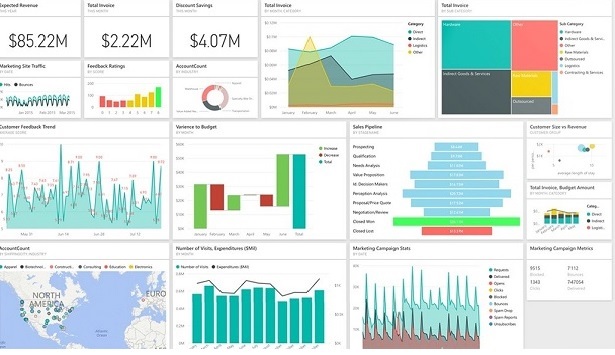
Why is BI important?
-
Measurement: creating KPI (Key Performance Indicators) based on historic data
-
Identify and set benchmarks for varied processes.
-
With BI systems organizations can identify market trends and spot business problems that need to be addressed.
-
BI helps on data visualization that enhances the data quality and thereby the quality of decision making.
-
BI systems can be used not just by enterprises but SME (Small and Medium Enterprises)
Four types of BI users
Following given are the four key players who are used Business Intelligence System:
1. The Professional Data Analyst:
The data analyst is a statistician who always needs to drill deep down into data. BI system helps them to get fresh insights to develop unique business strategies.
2. The IT users:
The IT user also plays a dominant role in maintaining the BI infrastructure.
3. The head of the company:
CEO or CXO can increase the profit of their business by improving operational efficiency in their business.
4. The Business Users:
Business intelligence users can be found from across the organization. There are mainly two types of business users
Key benefits of business intelligence
A successful BI program shines light on ways to increase profits and performance, discover issues, optimize operations, and much more. Here are just a few of the many benefits of BI:
Receive support for fact-based decision-making. BI tools help executives, managers, and workers uncover insights that are relevant to their roles and areas of responsibility – and use them to make decisions based on fact, not guesswork.
Gain and maintain competitive advantage. With timely BI, organizations can quickly identify and act on new trends and opportunities. They can also assess their own capabilities, strengths, and weaknesses compared to competitors and use that information to their advantage.
Measure and track performance. BI dashboards make it easy to monitor key performance indicators (KPIs), track progress against targets, and set alerts to know where and when to focus improvement initiatives.
Identify and set benchmarks. BI solutions let organizations compare their processes and performance metrics to industry standards, determine where improvements are needed, set meaningful benchmarks, and monitor progress toward goals.
Spot issues so they can be resolved. With BI, users can detect potential business problems before they cause financial harm – such as manufacturing or distribution bottlenecks, upward trends in customer churn, rising labor costs, and more.
Operate more efficiently. Business intelligence systems allow everyone to spend less time hunting down information, analyzing data, and generating reports. They can also identify areas of overlap, duplication, or inefficiencies across departments or subsidiaries in order to streamline operations.
Make data and reporting accessible to everyone. BI software offers intuitive interfaces, drag-and-drop reports, and role-based dashboards that team members can use themselves – without the need for coding or other technical skills.
Improve customer and employee experiences. BI users can mine data to spot patterns in customer and employee behavior, analyze feedback, and use insights to tailor and improve experiences.
Increase revenue and profitability. Ultimately, business intelligence data leads to a better understanding of where risks and opportunities exist, so that teams can make profitable adjustments.

